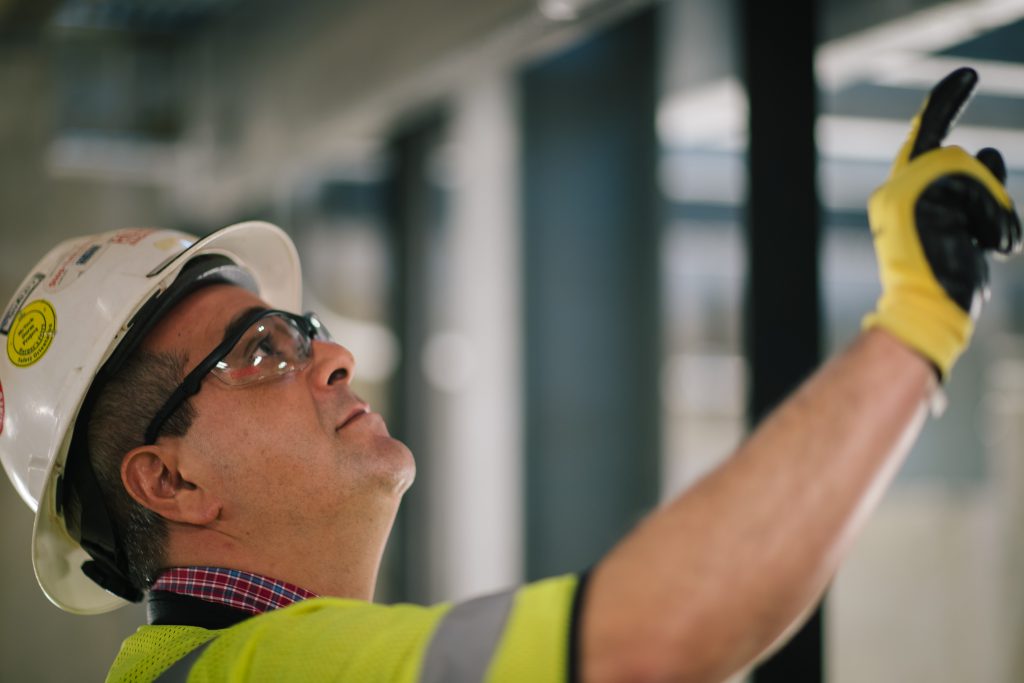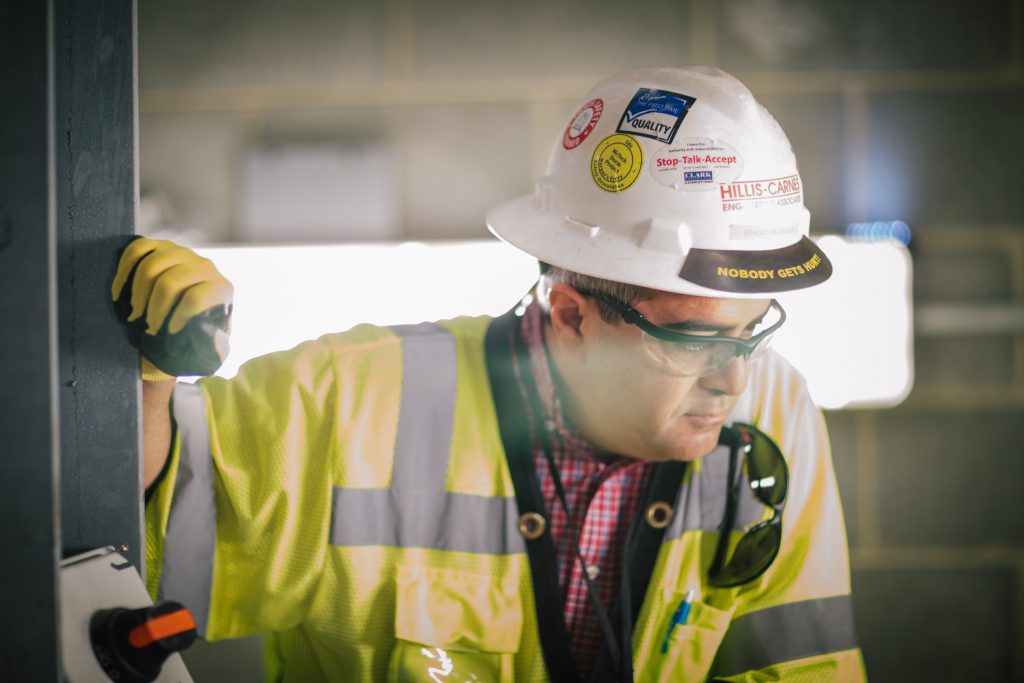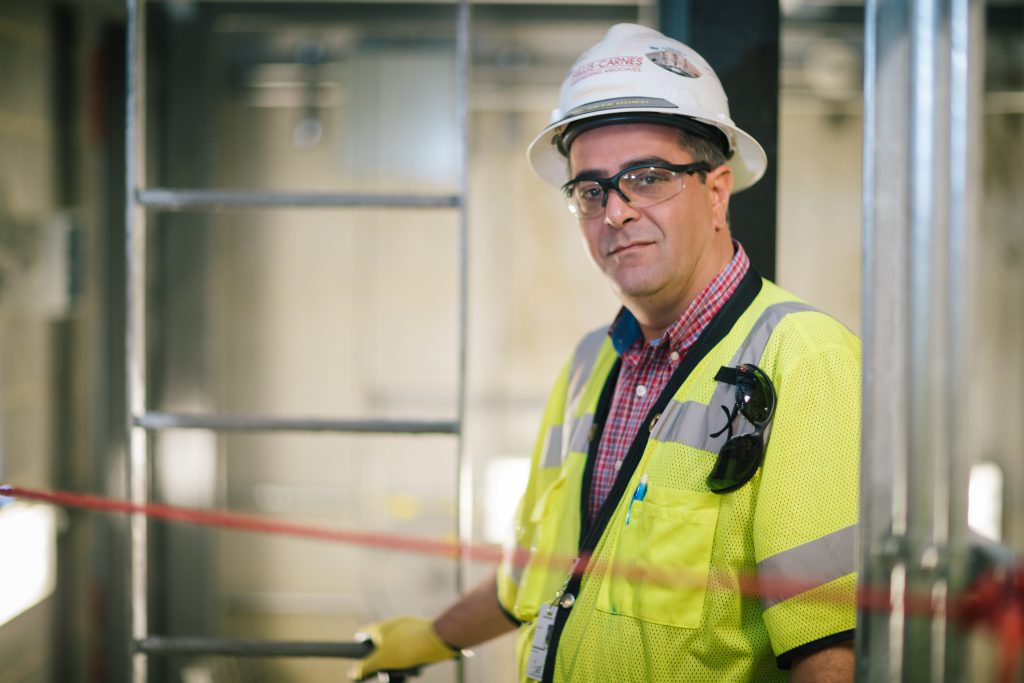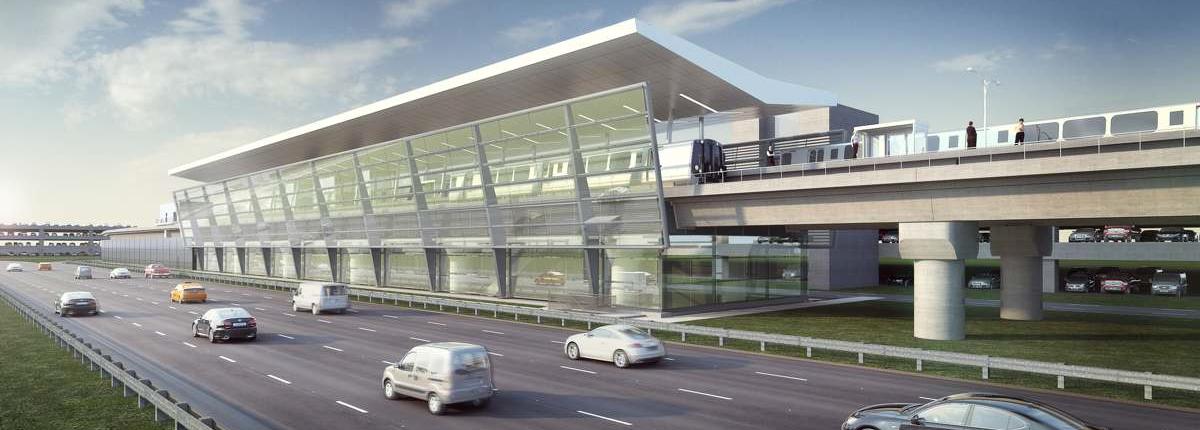Perhaps no one has spent more time on the Silver Line than Springfield, Va., resident Behdad Balazadeh. And the journey for the 47-year-old project engineer with Hillis-Carnes Engineering Associates Inc. might also be the longest. It began more than 6,000 miles away in Tehran, Iran, where he was born into a family of healthcare professionals. His father and uncles were doctors, and his mother was a nurse. Despite some pressure to pursue medicine as a vocation, Balazadeh attended university in Tehran and graduated in 1995 with a degree in materials engineering. After earning his master’s in 1999 in materials engineering with a focus on corrosion prevention, he felt a pull toward the United States. Now, he looks back at three years on the CRC’s Silver Line Phase 2 project, where he ensures every weld and connection are the highest quality possible.

When you were growing up in Iran, what was it that drew you to engineering, to wanting to be part of this field? Honestly, I didn’t want to be an engineer! Because my father was a doctor, my uncle was a doctor, a couple of my cousins were in education. We didn’t have an engineer in the family. But I don’t know what happened to me. And I wanted to be a doctor! But I changed my mind, went through this route, and I love it.
What did you do when you first got to the United States? In Iran, I was working in the power plant manufacturing industry. When I got here, I thought to myself: “What can I do?” I found the American Welding Society, filled out the application to become a CWI-certified welding inspector, took the exam, and I passed. And a week after that, I found a job. Do you know what that job was?
Tell me. Silver Line Phase 1!
Wow, you have a real history with this project! You’ve seen the whole Silver Line project through? Yeah! My first job was working on Silver Line Phase 1; I joined Silver Line Phase 2 in mid-2016. My job is inspecting structural steel and welded connections – everything that comes to steel, bolted connections, decking, columns, precast connections, stuff like that.
Paint us a picture of what your typical workday looks like. I start with paperwork in the morning— reports or remaining emails from the last day. Then, I check the schedule or my texts and stuff like that, to see what scheduled jobs I have for that day that require inspection. Then I head out to different sites that where there is work to be inspected. I talk to subcontractors, superintendents, and engineers about job topics – ask questions, answer questions other people have. I go back to the office in the afternoon and update my inspection log which includes where I inspected and any potential issues, and then talk to the Quality Control (QC) team because we have different inspectors for different activities. And then at the end of the day, I check my schedule and plan for the next day.
What sort of things do you look for during your welding inspection? We follow codes and the approved structural drawings and shop drawings. We look at the drawings, look at what has been welded, and measure the welds. If any non-destructive tests are required, if any pre- or post-treatment required, we follow the instructions – whatever we have in the drawing, specification, or standard.

Having worked on Phase 1 of this project before joining CRC to work on Phase 2 — how well has inspection gone, comparatively, for Phase 2 given your work experience? How would you grade it? Rarely in projects can you find such a professional manner as what we have on this project. One of the things I love about this project is the QC system here. I think it’s one of the best systems I’ve ever worked with.. If I find something that needs to be corrected, nobody questions that. Everybody’s trying to work and help each other to solve that problem, and this is very important. That’s a very important point to me – the QC system here is very professional.
What other sorts of things set Phase 2 apart, make it special? First, the teamwork. I’ve never experienced such teamwork! Everybody’s united for one goal – the best quality possible. Everyone in operations at CRC works with the quality control team to get the best quality possible. It’s also very organized and duties are clear. If you work for a week on this project, the first thing you realize is that all the parties involved in this project – I’m talking about CRC, I’m talking about clients, I’m talking about subcontractors, everybody – they all care a lot about this project. Everybody’s working to get the best quality. We are all working with code, IBC Chapters, s AWS D1.1, D1.5, etc. These are all standards, but these standards of codes are the minimum requirements for building. We are doing well above that!
During your time with the Silver Line Phase 2, are there any particular successes or triumphs that you had that stand out in your mind? After a couple of years, when the job is almost done, you look at what you have done or the team has done – that’s a success! Because what we all want to do is provide the safest public facilities or, let’s say, infrastructure, for people in the United States. And that’s the reason, that’s the first requirement of IBC Code, International Building Code, is to maintain public safety and health. And when you see people working hard to maintain this quality with the highest standard, you’re proud.

What sort of impact do you think this project’s going to have in the future? What are going to be the benefits for the community? It will make travel easier, cheaper, and more environmentally friendly. We all waste our time in traffic during the day. Why not, instead, share that time with family and friends? And when the traveling is easier, it also helps the small businesses around these [Silver Line] facilities.
What would you like the people who will use the Silver Line Phase 2 rail line to know about it from your perspective? If you could talk to the future riders going out to Dulles, what would you like them to know when they get on Metro, see the stations and have that convenience? I’d like the people using this infrastructure in the future to know the people who worked on the project considered it building something for their families. My son is probably going to use it in the future. So, we made it as safe as possible.
How do you think you’ll feel when you see Phase 2 up and running? Each time we drive by the facilities or the bridges we built, I show them to my son and my wife and say, “Hey, this is my work!” My parents, actually, came over here to visit us. I showed them Phase 1: “Hey, this was our project when I started in the United States.” It’s going to be the same thing around here with Phase 2. It’s very amazing.
